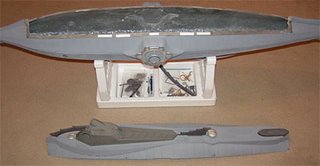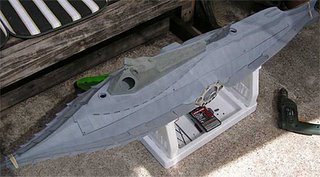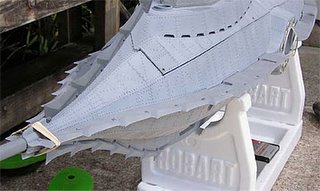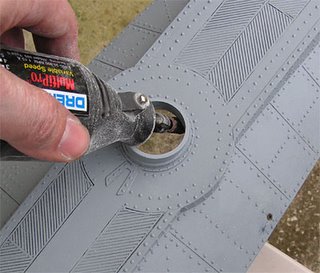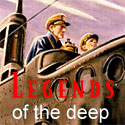The diving planes supplied with the kit are clean and solid with crisp rivet detail. On the static version, the diving planes are molded into the side keels and are a tad thinner in cross-section.
The two large planes forward and aft have brass control shafts installed in them. The shafts have machined grooves which hold rubber o-rings (removed from the shaft in the photo). They come fitted in a brass stuffing tube filled with grease for mounting in the hull (shown on the shaft at right).

Since the stuffing tube would only work if it was mounted flush with the hull, I can only assume they were intended for a dry hull application. However, since mine will be a wet hull, and each plane will be mounted in a simple bearing in the hull, the stuffing tubes are unnecessary. Each set of forward and bow planes will be linked to a single pushrod exiting the WTC through a watertight seal.
The two small forward "trim" planes come without shafts and will be drilled out to accept a length of brass rod.
Continue Reading
The two large planes forward and aft have brass control shafts installed in them. The shafts have machined grooves which hold rubber o-rings (removed from the shaft in the photo). They come fitted in a brass stuffing tube filled with grease for mounting in the hull (shown on the shaft at right).

Since the stuffing tube would only work if it was mounted flush with the hull, I can only assume they were intended for a dry hull application. However, since mine will be a wet hull, and each plane will be mounted in a simple bearing in the hull, the stuffing tubes are unnecessary. Each set of forward and bow planes will be linked to a single pushrod exiting the WTC through a watertight seal.
The two small forward "trim" planes come without shafts and will be drilled out to accept a length of brass rod.



